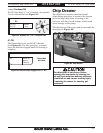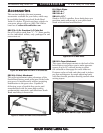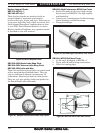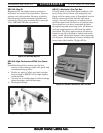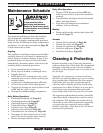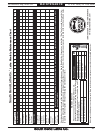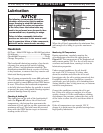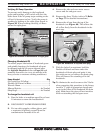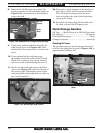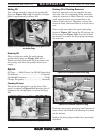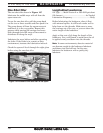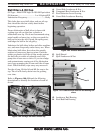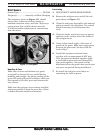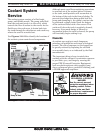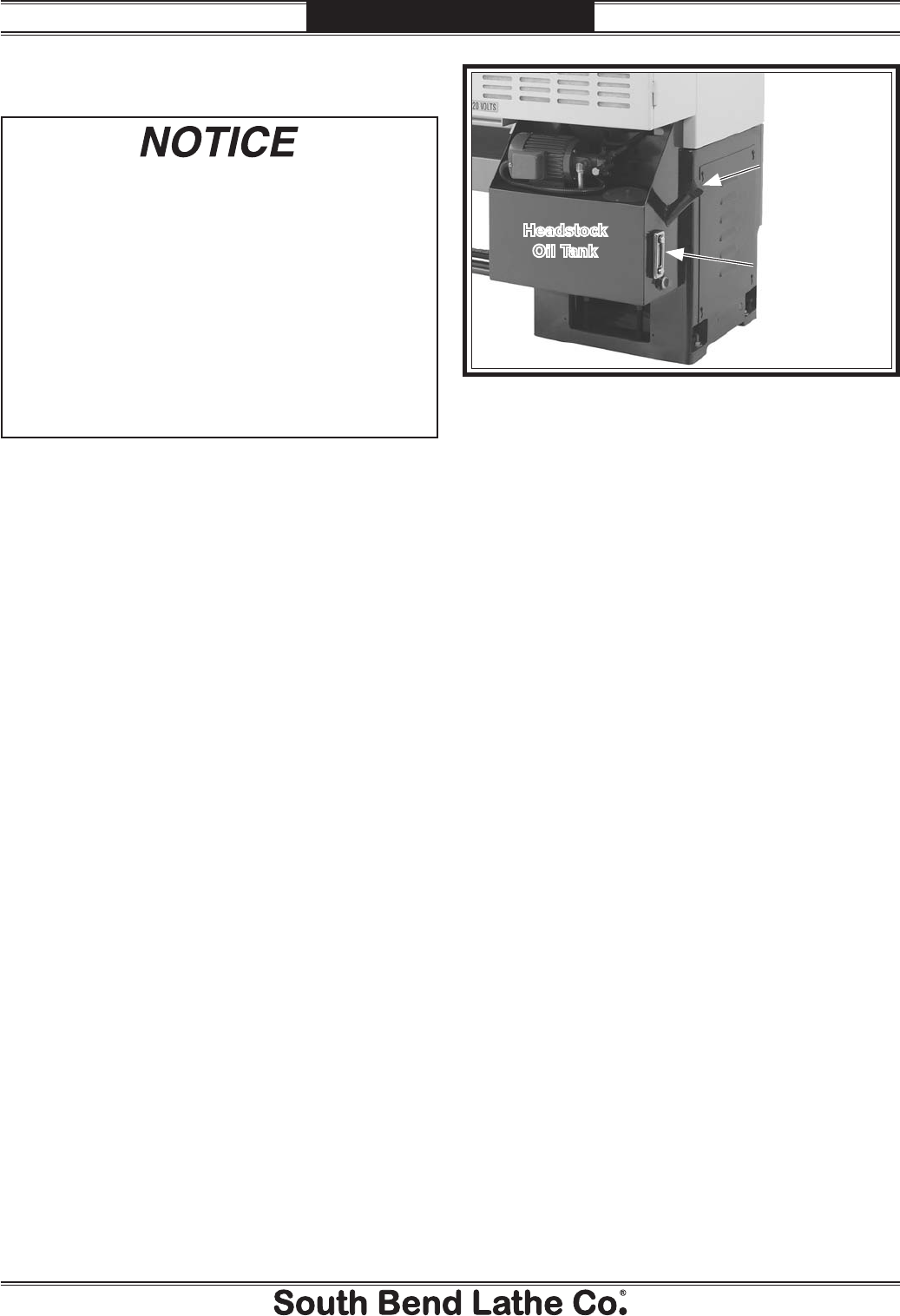
-64-
For Machines Mfg. Since 5/11
13" x 40" Heavy 13
®
EVS Lathe
MAINTENANCE
The following recommended lubrication
schedules are based on light-to-medium
usage. Keeping in mind that lubrication
helps to protect the value and operation
of the lathe, these lubrication tasks may
need to be performed more frequently than
recommended here, depending on usage.
Failure to follow reasonable lubrication
practices as instructed in this manual could
lead to premature failure of lathe components,
which will not be covered under warranty.
Lubrication
Headstock
Oil Type .. Mobil DTE Light or ISO 32 Equivalent
Oil Amount ............................................ 6.4 Quarts
Check/Add Frequency ....................................Daily
Change Frequency ...................................Annually
The headstock lubrication consists of an electric
oil pump, low pressure kill switch, holding
tank, oil lines, and distribution manifold. The
distribution manifold directs a series of oil lines
to key locations, to ensure that they remain well
lubricated during operation.
The oil pump automatically turns ON and sends
oil to the headstock components when the main
power switch is turned ON and the STOP button
is reset. This allows the headstock components
to be fully lubricated before the spindle is started
to protect the gears and spindle bearings against
potential damage from dry starts.
Checking & Adding Oil
The sight glass on the side of the headstock oil
tank (see Figure 97) shows the oil level and
temperature—the bottom line represents the
minimum oil level and the top line represents the
maximum oil level. The lathe must be powered
down with the STOP button to get an accurate
reading on the oil level.
When the oil level approaches the minimum line,
add enough oil to bring it up to the maximum
line.
Monitoring Oil Temperature
During operations, regularly monitor the
oil temperature shown in the sight glass in
Figure 97. The temperature of the headstock oil
must remain under 170° F or the oil will start to
overheat and break down, causing it to lose its
lubrication properties.
Under normal conditions, the oil should
not reach 170° F; however, if it does, shut
down the machine and allow the oil to cool.
Investigate why the oil is getting excessively hot.
Possibilities may be poor ventilation, excessive
work loads, poor oil quality, oil is breaking down
(losing lubricity) due to long term use, or extreme
work site temperatures.
Correct the conditions causing the oil to get
hot. If the oil is old or you suspect it is of poor
quality, change it. If the work loads or working
environment are extreme, reduce the duty cycle
of the lathe to allow the oil to cool down when it
gets hot.
If the oil temperature ever exceeds 170° F,
change it to make sure the spindle bearings have
high quality lubrication.
Figure 97. Headstock oil tank.
Headstock
Oil Tank
Sight Glass
Oil Fill
Spout




